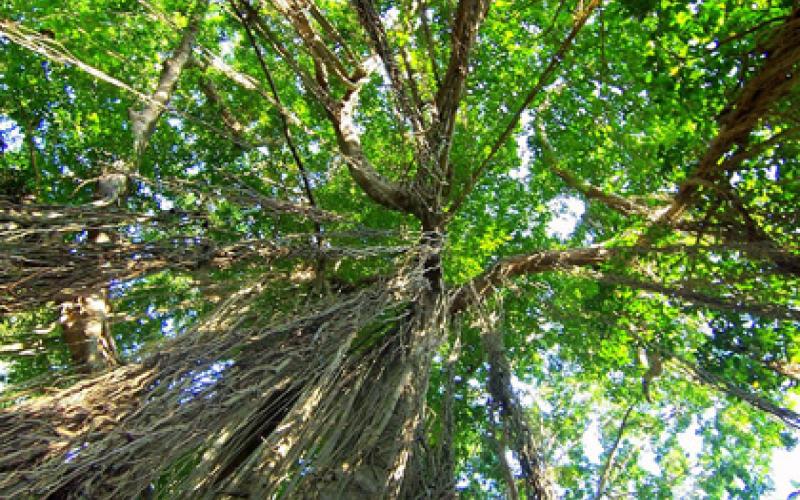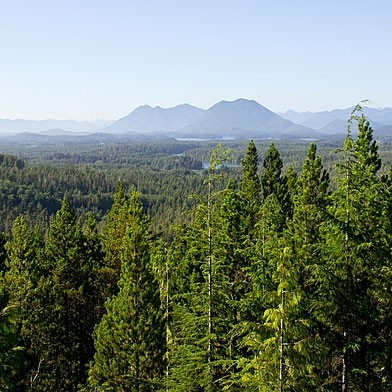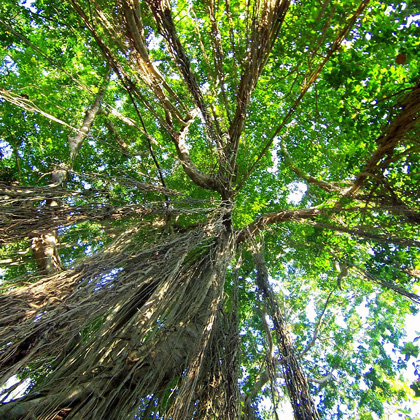Can forests earn more money than oil palm plantations?

Can forests earn more money than oil palm plantations?
Sustainable forest management that aims at Reducing Emissions from Deforestation and forest Degradation (REDD+) includes payments to landowners and can provide economic benefits over alternative land uses such as oil palm plantations. If certain key factors are resolved, REDD+ can simultaneously achieve economic and social success while bringing ecological benefits and contributing to climate change mitigation.
Original Paper
Hein, Lars, and Peter J van der Meer. 2012. "REDD+ in the Context of Ecosystem Management." Current Opinion in Environmental Sustainability 4 (6) (December): 604–611. DOI: http://dx.doi.org/10.10.1016/j.cosust.2012.09.016.
The challenge of solidifying safeguards in REDD+
The objective of REDD+ is to provide an economic incentive to landowners to manage their land in such a way that forests remain intact and the carbon stays stored in the plants. Using the forests' natural ability to remove carbon from the atmosphere is a relatively affordable and convenient way to contribute to climate change mitigation. Depending on local ecosystem dynamics, socio-political conditions and relevant alternative land uses, such as agriculture or oil palm plantations, REDD+ payments can be economically competitive. The benefits of REDD+ are especially visible in cases where – besides payments for carbon storage – other ecosystem services such as clean water provision and biodiversity are considered in the equation. These findings are particularly relevant for the local implementation of REDD+ projects that rely on the support of the affected people.
The researchers find that REDD+ payments of only three dollars per ton of avoided CO2 emissions makes sustainable forest management on peat lands financially more attractive than establishing oil palm plantations. Conversion of peat land forests through logging leads to ongoing CO2 emissions from the exposed soil. Most oil palm plantations in Kalimantan are established in exactly these areas. Another finding is that even on less carbon-rich mineral soils, REDD+ payments of $7/t CO2 will incentivize landowners to keeping and maintaining the forest than compared to converting the land to oil palm plantations.
Decades of intensive logging have led to vast areas of degraded grasslands in Indonesia. The researchers find that converting these degraded grasslands into oil palm plantations can have significant benefits for society. Cultivating these areas constitutes a big opportunity to both satisfy the demand for palm oil and withdraw carbon from the atmosphere. In this scenario, no deforestation takes place and biologically less valuable areas turn into productive lands that yield economic revenues while having a positive effect on the climate by absorbing carbon.
There is enough degraded land in most of Indonesia on non-peat mineral soils to swap the currently unused palm oil licenses from peat land forests to degraded grasslands. However, ownership of such land on mineral soils is more dispersed than ownership of peat land. This, among other factors, leads to higher costs, and has so far impeded political initiatives to switch locations for large-scale plantation licenses. Therefore, oil palm plantations are currently planted on the economically least attractive and ecologically most vulnerable sites – the peat land forests. This shows that investment decisions are not solely made based on economic calculations but that other factors such as the accessibility of land and political conditions drive land use change.
Four major insights came out of the study. First, REDD+ is instrumental to promote better land use. However, other measures need to be included to reach socially optimal land use. Aggregated economic incentives for multiple ecosystem services, not only carbon storage, will lead to increased competitiveness over other land uses. Second, an institutional framework for effective local land management is necessary to ensure clear land tenure, monitoring of land use changes, and enforcement of regulations. Third, local stakeholder interests need to be taken into account. Potential impacts on the ability of local people to use the forest through REDD+ projects need to be communicated to them. Furthermore, timing is essential since the affected people may not be able to forego revenues from forest use until they receive the first REDD+ payments. Fourth, designing and implementing REDD+ projects needs to be done in accordance to local ecosystem dynamics. For instance, if an area on a peat dome is drained in order to be prepared for an oil palm plantation, the groundwater table in the adjacent peat land forest will drop as well. This leads to forest degradation and increased CO2 emissions outside the plantation boundaries.
REDD+ payments can offer a competitive land use alternative that provides social, ecologic, and economic benefits to all stakeholders while contributing to climate change mitigation. However, there is a need for a locally adapted regulatory framework that takes into account the complex ecosystem dynamics for REDD+ to fulfill its climate objective. Awareness of cultural and institutional factors is essential for the effective and successful planning of REDD+ projects for local ecosystem management as economic incentives. Mechanisms other than carbon payments need to be included to yield the societally optimal land use scenario. While only speaking for the researched area in Kalimantan, Indonesia, this paper shows that economic models can serve local land use planning processes. This insight is particularly relevant for policymakers who can contribute to grounding political decision-making on clearly defined factors that illuminate economic, ecological, and social impacts of land use policies.




